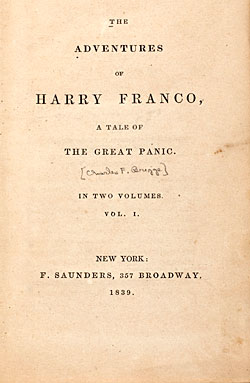Beecher confronts head-on the problem in all injunctions to virtue: that the picture they paint of vice is more compelling and attractive than the staid, dutiful path of righteousness. In towns and cities, the young man continually comes into contact with “a very flash class of men,” “swol[le]n,” or puffed up clerks, “crack sportsmen, epicures, and rich, green youth.” His vivid experiences at the theatre, the circus, and the race track cause him to loathe “industry and didactic reading.” Beecher combats this threat by offering a point of anchorage for market culture’s unmoored subjectivity. In the floating world of antebellum capitalism, reality is one densely woven veil of illusion: speculative schemes, fictitious capital, paper promises, counterfeit notes. The young man treads his perilous way amid a “mimic glow,” a painted Paradise. The devilish serpent in this garden of illusory delights is the Tempter, the “dangerous m[a]n” who lies in wait to snare the young man “by lying, by slander, by over-reaching and plundering him.” The commercial world is one in which copies proliferate: the young man, seeing the brilliant wit, is “smitten with the itch of imitation,” driven to emulate “the smooth smile, the roguish twinkle, the sly look.”


